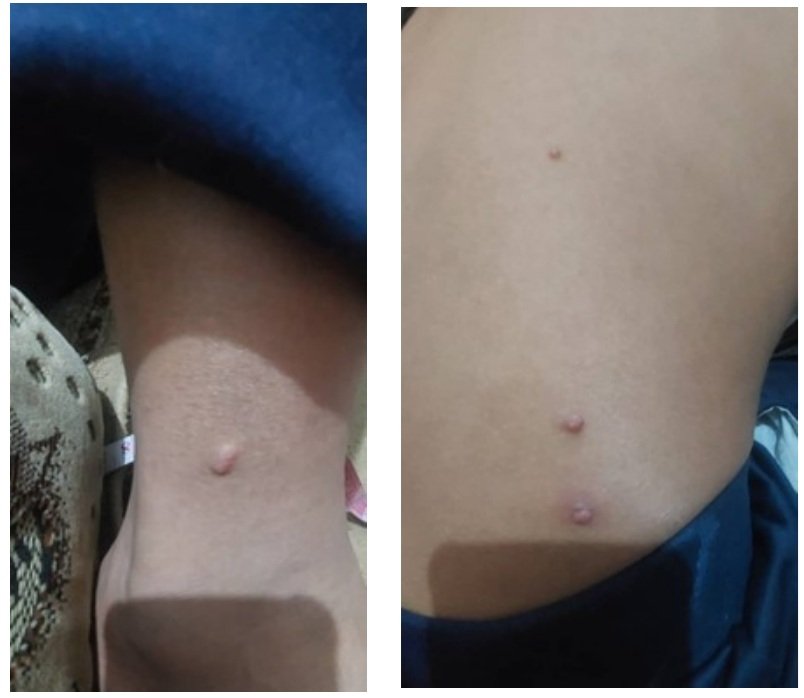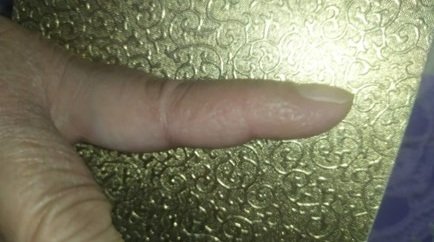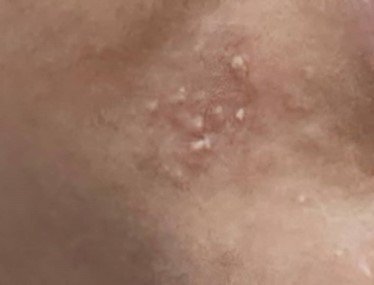Background:Teledermatology consists of a trained clinical photographer taking a series of digital images of a patient’s skin lesion. The images are remotely reviewed by a dermatologist to decide if additional in-office care is required. Objective: To analyze the scope and patterns of cutaneous cases received through social media websites. Patients and Methods: The research involved male and female patients of all ages—infants, children, and adults—who presented clinical photographs of dermatological lesions through WhatsApp. Results: The clinical information and photographs showed a varied range of dermatological disorders. Conclusion: Social media has revolutionized medical communication significantly, lowering distance-related barriers. All consultations, diagnoses, treatments, and follow-ups were provided for free, as a service to society. Alhamdulillah.
Teledermatology allows remote consultations with visual reporting, making it particularly beneficial in impoverished or conflict-prone regions. This section of the book contains a specially selected series of dermatological cases submitted through mobile platforms. All the cases were evaluated, diagnosed, and treated without personal interaction, bringing to life the practical uses of mobile teledermatology.











Teledermatology, one of the most sought-after subspecialties of telemedicine, applies telecommunications in the transference of medical data on skin diseases and neoplasms of the skin over distances using audio, visual, and digital devices. Its applications extend to clinical practice (diagnosis, consultation, and treatment) and continuing medical education.
The term teledermatology was coined in 1995 by Perednia and Brown, who showed how it could be used to meet healthcare needs in underserved rural areas [1].
Mobile telemedicine, being one type of teledermatology, makes use of wireless or portable machines—like smartphones or tablets—by either the practitioner or patient. It is especially convenient for travelers or clinicians operating in dynamic, non-stationary clinical settings.
Mobile teledermatology allows triage, aids timely referral, and helps manage chronic dermatological diseases in the long term. In spite of all benefits, the existing evidence points toward a risk of missed diagnosis—most notably malignant melanoma—suggesting need for additional rigorous validation studies [2].
The utility of teledermatology for most skin conditions develops further with time. Initial findings indicate that eczema, follicular eruptions, viral warts, herpes zoster, acne vulgaris, irritant dermatitis, vitiligo, and superficial bacterial or fungal infections are more boldly diagnosed remotely. However, consistency in accuracy between studies supports the need for further study to establish the best use cases of teledermatology.
This case series emphasizes the increasing promise of mobile teledermatology for delivering timely, accessible, and effective dermatological care for underprivileged areas. Using a simple communication platform like WhatsApp, doctors were able to diagnose and treat a variety of skin conditions without the patient being present. Although this model holds promise, particularly in low-resource environments, it also underscores the need for additional study to confirm diagnostic accuracy and create standardized protocols. Mobile teledermatology, in general, is an empowering move toward decentralized and inclusive healthcare delivery.
Based on the experience and observations from this case series, the following recommendations are suggested to improve the utility and impact of mobile teledermatology in similar healthcare settings:
Encourage the adoption of secure mobile messaging platforms (e.g., WhatsApp, Signal) for preliminary dermatologic consultations, especially in rural or underserved areas.
Develop and disseminate standardized clinical triage guidelines to determine which cases require in-person follow-up after teleconsultation.
Conduct training courses for general practitioners and front-line health workers on identifying common dermatologic conditions amenable to teledermatology.
Encourage community awareness programs to educate patients regarding when and how to access dermatologic consultation via online channels.
Conduct further prospective studies to assess diagnostic accuracy, patient satisfaction, and long-term outcomes of mobile teledermatology models.
Written informed consent was obtained from all patients or their legal guardians for the use of clinical photographs and anonymized data in this publication. All images have been carefully de-identified to protect patient privacy and confidentiality. No personally identifiable information is disclosed.